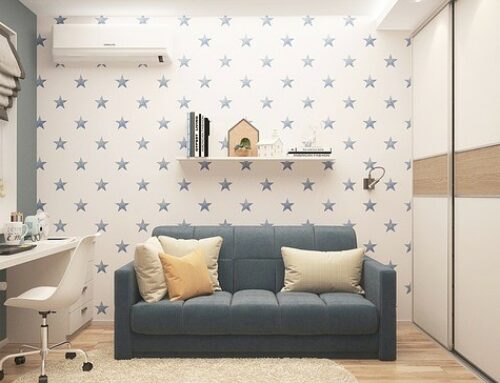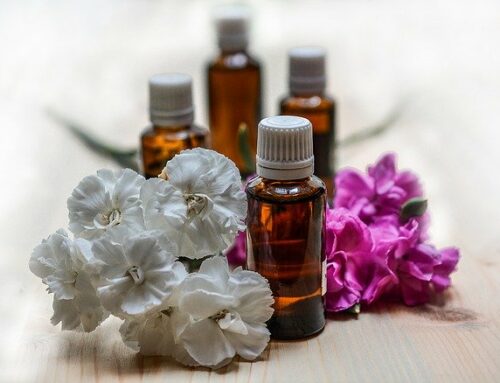Table of Contents
It doesn’t take much to increase the humidity of your house to a point of discomfort. Bad ventilation and a damp shower is a recipe for mold and mildew scaling the wall.
But humidity doesn’t just reduce your luxury tiles to a shade of its glory. An overly humid home spells potential health issues for the occupant, either directly or indirectly.
Feeling hot and bothered is just a start, and if nothing is done to reduce the humidity, you’re welcoming more problems into your house.
How Humidity Can Adversely Affect Health

In plain simple terms, humidity is the concentration of water vapor in the air. High humidity means there’s a high concentration of invisible water droplets in the air and vice versa.
When there’s excessive moisture in the air, your body’s respiration system suffers. In an ideal condition, your body releases sweat which eventually vaporizes into the air.
But when you’re in a humid environment, those sweat couldn’t vaporize and remain stuck on your skin. This explains why you’re feeling uncomfortable and bothered, according to UPMC.
The dampness on your skin saps off energy and makes you feel lethargic. And if your home is constantly high in humidity, there are serious complications that may follow, like fainting, dehydration, and heatstroke.
High Humidity Invites Allergens
Fatigue is not your only concern when humidity skyrockets in your home. When moisture is trapped in your home, microorganism starts turning your house into a breeding spot.
The most obvious sign of a warm and humid home is the growth of mold and mildew. These are fungi that thrive in humid areas, especially in the bathroom, kitchen or attics.
Not only they are an unpleasant sight to behold, but mold and mildew also produce discrete odor and damages surfaces that are infected.
When you spot mold and mildew growing at home, there are often other allergens that are too small for your eyes but are breeding rapidly too.
Dust mites are one such microscopic pests that thrive in a humid environment. But rather than growing in your bathtubs, dust mites primarily haunt your bedroom and can be found in abundance in your bed.
High humidity, especially in the range of 80%-90% RH is also a haven for bacteria. Studies have shown that bacterias generally thrive in high humidity and cannot survive in low humidity. (A)(B)
What Is The Ideal Humidity For Human?
It’s pretty clear that a high level of humidity spells trouble. But drying out all the moisture in the air isn’t a wise choice either. That’s because extremely low humidity can increases cold, flu and other respiratory infections.
So, what’s the ideal humidity to have at home?
According to the ANSI/ASHRAE Standard 55-2013, humans feel comfortable with a humidity range of 30% to 60%. This humidity range is also cited by EPA in preventing the growth of mold and mildew.
The sweet spot or ideal humidity range would then be around 45% to 55%. This is the range of humidity that you want to aim for when you’re reducing humidity in your home.
How To Lower Your Home’s Humidity
The good news about humidity is, you don’t need to suffer in sticky sweat and fatigue. There are various ways, that can reduce the humidity in your house. Some methods involved getting the right tools and appliances, while others involved tweaking your daily habits.
Here it goes.
1. Open Up The Windows

If you’ve been keeping the windows closed, to prevent dust from entering your house or other reasons, you’ll want to open them up to their max.
The fresh air that breezes through will carry the excessive vapor out of your home. You’ll notice the subtle change when you’re suddenly refreshed by as the stale and musky air is knocked out of your house.
2. Install An Exhaust Fan
There are occasions where you hardly get any airflow even if you’ve got all the windows wide open. Or doing so invites other pests into your home.
This calls for the exhaust fan which performs well when installed in damp places like the bathroom or kitchen. The high-spinning fan blades will remove the excessive vapor from the area.
3. Reduce Hot Showers
Hot showers are a sure way to increase humidity in your home. Just check out the steam on the mirror and glasses in your bathroom each time you enjoyed the hot shower.
Instead of pampering yourself with the running hot water, try the cooler approach. You’ll find that cold shower is equally refreshing, without making the bathroom more humid than the gushing hot water.
4. Dry Clothes Outside The House
It’s convenient that you dry your clothes, shoes and other apparels in the house. There are no risks of thunderstorms or having them blown over by a gust of wind.
But drying clothes in the house is a sure way of increasing moisture content in the air. You may want to stop that practice if you’re suspecting your house’s humidity is way beyond ideal.
5. Wipe Showers Dry
A simple way to reduce humidity yet cost nothing in the process is to keep your bathroom dry. It may take about 5 minutes of your time but wiping off the droplets of water on the wall reduce the molecules that vaporize into the air.
6. Use Normal Fans
You don’t need to hack walls and ceilings to install exhaust fans. Normal standing or table fans may help in ventilating your house.
Be sure to turn them on and keep the airflow going when you’re feeling stuffy at home. Of crouse, channel the air to an open window to drive the moisture out.
7. Ensure No Leaks in Plumbings
Plumbings can be the hidden cause of the increased humidity in your home if the pipes involved has been leaking for a while.
You may want to play detective to locate the leaking joints. Sometimes, they are not as obvious as in plain sight. Look for water spots that may form in the wall or floor, as that’s a sure sign of a leaking pipe.
8. Remove Plants From The House
Some house plants are a sight to behold and gives your house a touch of Zen. But these plants may add their fair share of moisture to the air.
Common suspects are the Areca palm, rubber plant, peace lily, and English Ivy. Keep them away from the house and there’s a chance that the humidity level will dip.
9. Add Dehumidifying Plants In The House
If you insist on having plants to beautify your house, you’ll want to opt for those that don’t add moisture in the air but reduces them.
Plants like cacti, orchids, and tillandsia should be on your shopping list to bring down the humidity in your home.
10. Use An Air Conditioner
Turn on your air conditioner if you feel that it’s stuffy. The only downside is that it hurts your energy bill and isn’t the greenest solution.
11. Get An Air Dehumidifier
An air dehumidifier does exactly what it says. As the air is channeled through the dehumidifier’s vent, water particles in the air are removed by the evaporator. A dehumidifier varies in size and capacity, so you’ll want to install that fits the area of your home.
A dehumidifier is also less damaging to your energy bill.
12. Use Charcoal Briquettes
If you have leftover charcoal briquettes from the grill, you can use it as a natural dehumidifier. It is highly effective in absorbing moisture from the air and doesn’t cause a mess by disintegrating into powdery form.
13. Remove Carpets And Rugs
Carpets and rugs may trap moisture and contribute to the humidity in your home. If molds and mildews are growing rampantly, you may want to consider doing without these pleasantries in your home.
How Do You Know If You’ve Got The Ideal Humidity

Theoretically, you’ll want to reduce the humidity in your home to approximately 50% RH. But how do you know if you’ve done enough to keep the air from having too much moisture?
For start, you’ll feel less stuffy and fatigue that is associated with a humid environment. Also, take note of the mold and mildew. If the humidity has been reduced substantially, these fungi should stop spreading.
Achieving humidity that’s ideal for humans also means that allergen like dust mites will decrease in population. If you’ve been sneezing or coughing due to these allergens, you may find that your symptoms subside.
Of course, getting a hygrometer is the best solution to have an accurate humidity reading at home. A digital hygrometer is reasonably affordable and it makes a good indoor decor besides providing with the current humidity value.
Bottom Line
Don’t underestimate what an overly humid home will do to your health. Mine is a perfect example that leads to cracked paint, mildew, and dust mites growing rampantly in the house.
Put some of these recommendations into practice and you’ll notice that your home will not be so stuffy and humid anymore.
Related:





Hi Kenny, great post about humidity in the home. I have been talking to my wife about this as sometimes I come home from work and the room is like an oven. all the windows are shut and it is very uncomfortable.
I did buy a humidifier for the kitchen for using when the tumble drier is on. I think I need to move it to the living room.
I will try it out and if it doesn’t work I will try your other suggestions.
Thanks for this info,
Frank
Hi Frank,
Thanks for sharing your thoughts. I hope shifting the dehumidifier helps for you.
Cheers,
Kenny
Hi Kenny,
Thanks for the great tips. Humidity is a huge problem in my house during the summer months. I do a lot of these things on your list but I haven’t done them all. It seems silly, but I’ve never really tried to open the windows up for too long. I will do it once in a while but not too often. It makes sense that it would help so I am definitely going to try that. One that I have started doing is wiping that shower down after use and that has been super helpful for reducing mold and humidity in my bathroom! Perfect timing on this post. Thanks again.
Hi Dan,
Thanks for checking out the article and I’m glad it’s been helpful.
Cheers,
Kenny
Humidity is one of those things we do not think about sometimes as it relates to our own homes. You caught me by surprise when you mentioned hot showers and rugs in our homes.
You definitely have educated me on things to look out for. I do not own a dehumidifier but I know many people who do. I kind of always thought it was a waste of money but actually it saves us in the long. Thanks for sharing.
Hi Nate,
Many of us are not attentive to the humidity in the house until problems start creeping up. Glad that you’ve found this article useful.
Cheers,
Kenny